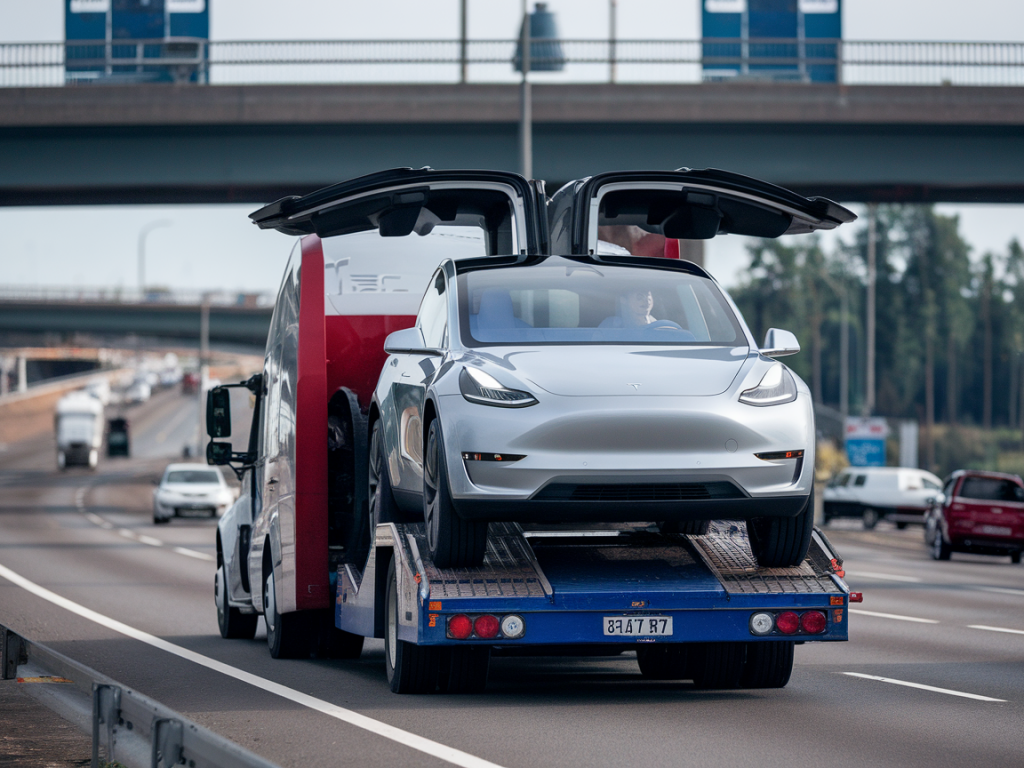
Understanding Tesla’s Supply Chain: A Paradigm Shift in B2B Logistics
If there’s one company that epitomizes innovation in today’s business landscape, it’s Tesla. While most of the public sees Tesla as a trailblazer in electric vehicles and renewable energy innovation, there’s an equally compelling story happening behind the scenes—in its supply chain. As someone drawn to uncovering what makes businesses operate smarter and better, Tesla’s approach to logistics and supply chain management has always fascinated me. Why? Because it offers transformative lessons for any B2B company looking to optimize, innovate, and stay ahead of its field.
What Makes Tesla’s Supply Chain Stand Out?
At its core, Tesla’s supply chain reflects the company’s overarching philosophy: integrating technology to achieve efficiency and innovation. Unlike traditional automakers reliant on outsourcing and third-party contractors for major components, Tesla has opted for vertical integration. This bold decision gives them complete control over their supply chain, from design and production to distribution. While this approach comes with risks, its benefits are undeniable.
Take the production of Tesla’s batteries as an example. Tesla’s Gigafactories serve as a cornerstone of their supply chain strategy. By manufacturing batteries in-house, Tesla ensures quicker production while maintaining superior quality standards. This level of control has allowed the company to bypass many of the delays that have plagued competitors who outsource similar components.
For a B2B company, Tesla’s model underscores the importance of aligning supply chain strategy with long-term business goals. Instead of relying on the status quo, Tesla challenges conventions—and that’s something every B2B leader should take note of.
The Role of Data and AI in Tesla’s Logistics
One of the secrets behind Tesla’s supply chain efficiency lies in the company’s use of data and artificial intelligence (AI). Tesla’s cars aren’t the only things equipped with cutting-edge tech—their entire logistics network is heavily data-driven.
For instance, Tesla monitors supplier performance in near real-time, creating an ecosystem where data transparency reigns. This ensures that issues can be identified and resolved before they escalate into larger bottlenecks. Additionally, predictability—one of the core pillars of efficient logistics—is achieved through AI-driven forecasting models. By analyzing market trends, demand signals, and production capacities, Tesla can adapt its supply chain operations to meet fluctuating demands dynamically.
For B2B companies, the implications are clear: a data-driven approach is no longer optional. Tools and systems that provide predictive insights, track logistics, and optimize inventory are invaluable for businesses in any industry. Whether you’re shipping components for manufacturing or managing large-scale warehouse operations, Tesla’s use of technology showcases what’s possible when logistics are powered by intelligence.
Resilience Under Pressure: Lessons From the Chip Shortage
The global semiconductor shortage caused disruptions in industries far and wide, with automakers specifically bearing the brunt. Yet, while several companies reduced production capacity or halted operations altogether, Tesla managed to keep its factories running. How? Through agility and innovation.
Instead of waiting for existing suppliers to deliver chips, Tesla rewrote its vehicle software to accommodate alternative semiconductors. This quick pivot and ability to redesign processes in response to unexpected challenges highlight the importance of flexibility. Tesla didn’t just react to the problem; it innovated its way out of it.
I often hear from B2B professionals about the struggle to adapt when supply chains hit roadblocks. Unpredictable events—whether geopolitical, environmental, or market-driven—are inevitable. The key takeaway from Tesla’s response is this: adaptability isn’t a luxury, it’s a necessary competency. B2B companies need contingency plans, diverse supplier networks, and the willingness to think outside the box to stay operational under pressure.
Environmental Impact and Ethical Sourcing
Another aspect of Tesla's supply chain innovation lies in its attention to sustainability. Tesla’s commitment to building a greener future extends beyond its products; it’s woven throughout its supply chain too. For instance, the company sources raw materials like lithium and cobalt for its batteries in an ethical and sustainable manner.
In the B2B world, the importance of ESG (Environmental, Social, and Governance) factors is rapidly growing. Customers and partners increasingly expect companies to adopt sustainable practices in their operations, including within supply chains. Tesla sets a benchmark here—it shows that sustainability and profitability aren’t mutually exclusive. By implementing traceable sourcing, reducing waste during production, and relying on renewable energy to power its factories, Tesla underscores how B2B companies can align their business practices with a broader environmental mission.
Streamlining Distribution Through Direct-to-Consumer (DTC) Models
Unlike traditional car companies that rely heavily on independent dealerships, Tesla operates on a direct-to-consumer (DTC) model. While this approach primarily focuses on sales and customer experience, it has profound implications for B2B logistics as well.
By operating company-owned stores and showrooms, Tesla gains unparalleled control over how vehicles are sold and distributed. This eliminates the inefficiencies associated with third-party retailers, allowing Tesla to deliver products to customers more cost-effectively and efficiently.
For B2B businesses, rethinking traditional distribution models could unlock similar benefits. Are there middlemen in your distribution journey that create unnecessary costs or delays? If so, restructuring your logistics in a way that prioritizes direct communication with your clients could not only save resources but also enhance customer experiences.
Innovation as a Driver of Competitive Advantage
At the crux of Tesla’s supply chain lies a deeply ingrained culture of innovation. From using AI to streamline logistics to vertically integrating its production facilities, Tesla turns traditional logistics models on their heads. And this is where B2B companies—no matter their niche—can draw inspiration.
Think of ways your business could leverage technology, rethink outdated processes, or push the boundaries of what’s considered possible in your industry. It doesn’t have to mirror Tesla’s path, but the principle of constant innovation is universal.
Whether it’s adopting blockchain for greater transparency in supply chains or investing in robotics to improve warehouse efficiency, your ability to embrace and integrate new innovations will determine your staying power in this competitive market.

